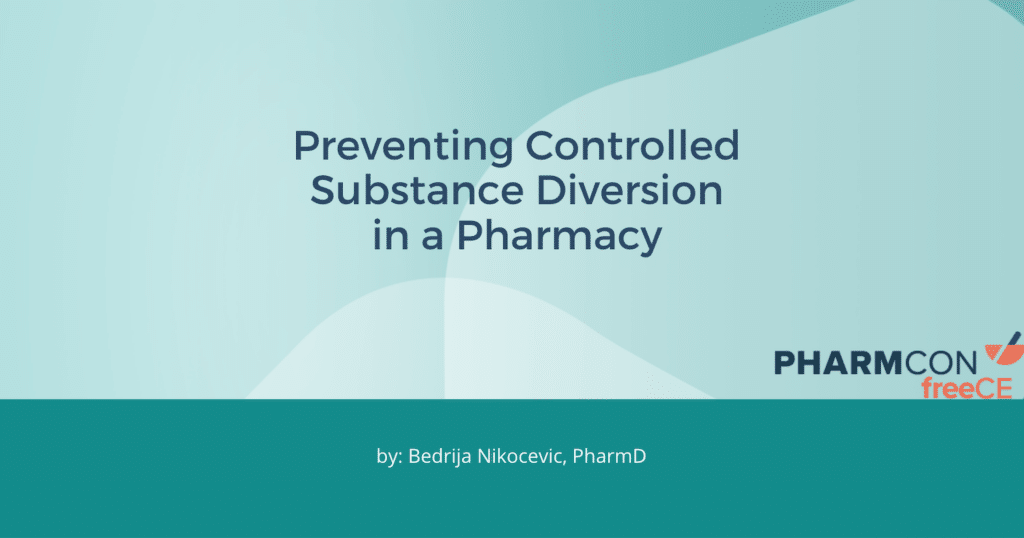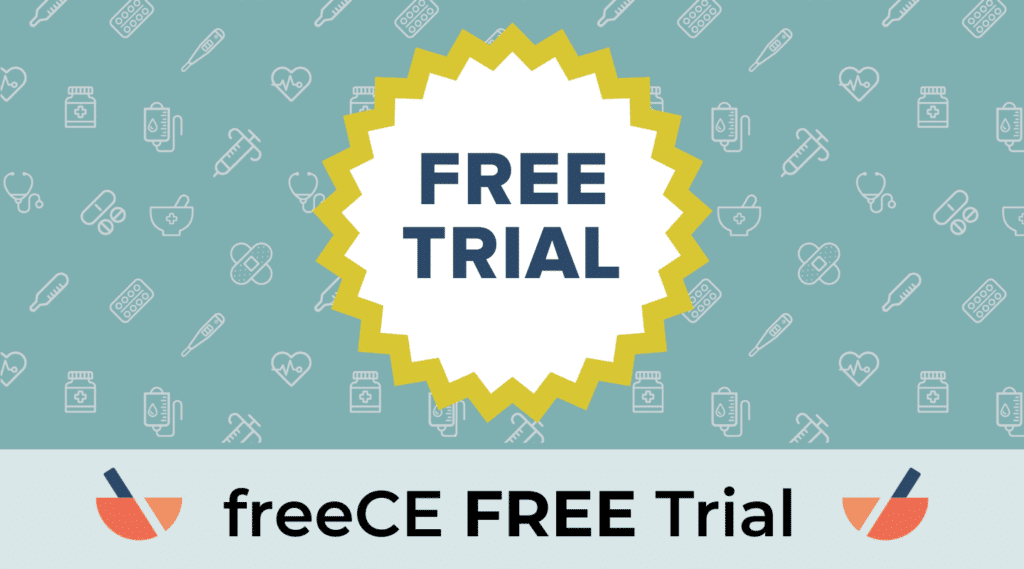In the United States, Drug Enforcement Agency (DEA) is responsible for enforcing Title 21 of the United States Code Controlled Substances Act (commonly referred to as Federal Controlled Substances Act or Federal CSA).1 The Agency’s primary responsibility is to balance the availability of controlled substances for approved uses while minimizing diversion and misuse of these medications. DEA achieves this goal by utilizing a “closed system” of distribution, which requires registration of all entities legally allowed to manufacture, purchase, distribute or dispense controlled substances, including pharmacies, physicians, manufacturers, and distributors.
Table of Contents
The federal regulations outlined in CSA divide controlled substances into five schedules stratified according to the controlled substance’s relative potential for abuse, medical uses, and potential for developing dependence as follows:
Schedule I Controlled Substances
Schedule I controlled substances have a high potential for abuse and currently have no accepted medical uses.
- Examples: heroin, lysergic acid diethylamide (LSD), peyote, marijuana (cannabis)*, methaqualone, 3,4-methylenedioxyamphetamine
*Please note: many states currently allow medical and recreational use of marijuana, but this substance remains a schedule I controlled substance federally at this time.
Schedule II Controlled Substances
Schedule II controlled substances have a high potential for abuse, and currently have accepted medical uses in treatment with or without severe restrictions. Abuse of these substances could cause severe psychological or physical dependence.
- Examples: codeine (including combination products containing >1.8 grams of codeine per 100 ml or 100 grams or >90 mg codeine per dosage unit with an equal or greater quantity of an isoquinoline alkaloid of opium), morphine, opium, and combination products containing hydrocodone, methadone, meperidine, oxycodone, fentanyl, amphetamine, lisdexamfetamine, methylphenidate, phencyclidine, cocaine
Schedule III Controlled Substances
Schedule III controlled substances have a lower potential for abuse than controlled substances listed in schedules I and II, and they currently have accepted medical uses. Abuse of these substances could cause moderate or low physical dependence or high psychological dependence.
- Examples: morphine combination products containing ≤50 mg morphine per 100 ml or 100 grams, combination products containing >200 mg but ≤1.8 grams of codeine per 100 ml or 100 grams and ≤90 mg codeine per dosage unit with an equal or greater quantity of an isoquinoline alkaloid of opium, buprenorphine, ketamine, oxandrolone
Schedule IV Controlled Substances
Schedule IV controlled substances have a low potential for abuse in comparison to schedule III controlled substances, and they currently have accepted medical uses. Abuse of these substances could cause limited physical or psychological dependence.
- Examples: tramadol and benzodiazepines (e.g. clonazepam, alprazolam, temazepam, midazolam)
Schedule V Controlled Substances
Schedule V controlled substances have a low potential for abuse compared to substances in schedule IV, and they currently have accepted medical uses. Abuse of these substances could cause limited physical or psychological dependence compared to substances in schedule IV.
- Examples: combination products containing ≤200 mg of codeine per 100 ml or 100 grams
Since Schedule I medications do not have any accepted medical uses, they may not be prescribed, administered, or dispensed for medical uses, and can only be used for research purposes.2 Schedule II-V controlled substances are commonly prescribed, administered and dispensed for treatment of various conditions, including chronic pain, cough, anxiety, seizures, obesity, sleeping disorders, and attention deficit hyperactivity disorder.
According to the 2021 Substance Abuse and Mental Health Services Administration (SAMHSA) National Survey on Drug Abuse and Mental Health, approximately 22% of the population used illicit drugs in the past year, with marijuana being the most commonly abused controlled substance.3 Additionally, the survey found that 14.2 million Americans 12 years of age and older misused prescription psychotherapeutics (i.e. pain relievers, stimulants, tranquilizers, sedatives and benzodiazepines) in the past year, and 9.2 million Americans 12 years of age or older misused opioids in the past year.
In its 2022 edition of Drugs of Abuse: A DEA Resource Guide, DEA identifies narcotics (e.g., fentanyl, heroin, hydromorphone, methadone, oxycodone), stimulants (e.g., amphetamines, cocaine, khat, methamphetamine), depressants (e.g., barbiturates, benzodiazepines, GHB, Rohypnol®), hallucinogens (e.g., ecstasy, MDMA, ketamine, LSD, peyote, psilocybin), steroids, marijuana/cannabis, inhalants, and designer drugs (e.g., bath salts, K2/spice, synthetic opioids) as most commonly abused and misused medications in the United States.2
Additionally, DEA lists dextromethorphan (a cough syrup available without a prescription), kratom and salvia divinorum as drugs of concern. While drugs of concern are not currently controlled under the Controlled Substances Act, they pose a significant risk to individuals who abuse them. In recent years, concomitant prescribing of “Holy Trinity” medications (opioids, benzodiazepines, and muscle relaxants [particularly carisoprodol]) has led to significant patient harm, including an increased risk of respiratory depression and death among patients taking these medications.3
Drug diversion occurs when controlled substances are illegally distributed, abused or misused.
The most common methods of drug diversion include:
- Illegal distribution by patients or staff
- Examples:
- Patients obtain prescription medications for a legitimate medical purpose, then sell them to others
- Staff orders additional controlled substances, steals the medication when it arrives, and destroys purchase records to cover up the theft
- Staff or patients write/call in fraudulent prescriptions for controlled substances, which are later distributed to make a profit
- Staff steals medications from patients in a healthcare facility, then distributes them for profit
- Examples:
- Doctor shopping: patient sees multiple physicians to obtain prescriptions for controlled substance medications to either abuse or misuse themselves or distribute to others
- Illicit internet pharmacies sell adulterated, counterfeit or non-FDA approved drugs or dispense prescription medications without a prescription
- Prescribing without a legitimate medical purpose and/or outside of course of professional practice (commonly referred to as “pill mill” prescribers), where a prescriber knowingly writes prescriptions for controlled substances for patients without a demonstrated need for the medication for a set fee
- Prescription pad theft: a patient steals prescription pads from the physician’s office, then uses them to write their own fraudulent prescriptions
- Prescription forgery, which can range from modifying a legitimate prescription to increase type, strength or quantity of medication prescribed, to creating fraudulent prescription pads and utilizing them to obtain prescription medications without a legitimate medical purpose
Controlled Substances Act & Pharmacists
Under the Controlled Substances Act, pharmacists and prescribers have equal responsibility for proper prescribing and dispensing of controlled substances. This “corresponding responsibility doctrine” requires that physicians write prescriptions for legitimate medical purposes upon conducting a good faith medical examination, and that pharmacists fill only prescriptions obtained under these conditions. Prescribing or filling an invalid prescription is a violation of the Federal and State Controlled Substance Acts, and would result in penalties, including, but not limited to, fines, disciplinary action against one’s license, and incarceration.
A Multifaceted Approach To Preventing Controlled Substance Diversion In The Pharmacy
Preventing controlled substance diversion in pharmacies requires a multifaceted approach with a focus on inventory control and appropriate dispensing of controlled substances. Pharmacists should develop and enforce policies and procedures for controlled substance procurement, receiving, recordkeeping, and dispensing that include multiple checks and balances to prevent drug diversion.
These procedures may include a “buddy” system for ordering and receiving controlled substances where at least two members of staff verify items ordered were received and placed on shelves, periodic unannounced controlled substance inventory audits, rotating duties for staff handling controlled substance procurement and receiving, limiting the number of staff with access to controlled substances, and minimizing opportunities for diversion through appropriate safekeeping of controlled substances (e.g., utilizing time-delayed safes to store controlled substances as appropriate, ensuring pharmacy door is secured at all times, and employing audio/video-surveillance to detect theft).
Remain Vigilant
When it comes to prescription dispensing, pharmacists need to remain vigilant and look for concerning behaviors (formerly referred to as “red flags”) that may indicate a prescription is invalid, such as:
- Patients driving long distances to a physician or pharmacy
- Patients paying cash for prescriptions
- Patients presenting without an identification
- Multiple prescriptions for different patients for the same medication(s) from the same physician (i.e. prescriptions from “pill mill” doctors)
- Prescribers writing prescriptions for certain drug combinations (e.g. “Holy Trinity”)
- High quantities of opioids for opioid-naïve patients
- Prescriptions written without a good faith medical exam or without a legitimate medical purpose
- Modified prescriptions (different handwriting or ink color, unusual quantities)
- Forged prescriptions (prescription pads differ from those typically utilized by prescriber or healthcare institution, prescriptions written outside of the prescriber’s scope of practice, unusual for prescriber, large quantities, common combinations of abused controlled substances, etc.)
Fraudulent Fillings & Pharmacist Risk
While filling fraudulent prescriptions poses a risk for pharmacists, DEA is more likely to take action for glaring misconduct (e.g. dispensing 550,000 tablets of oxycodone within a 6 month period). Pharmacists should do their due diligence and evaluate each prescription for validity, which may require following up with the prescriber and/or the patient prior to filling a prescription. Pharmacists may need to obtain a diagnosis, plan for further treatment, or diagnosis details when attempting to ensure validity of a prescription. Prescription Monitoring Program may be a useful tool to identify doctor or pharmacy shopping or excessive filling of controlled substance prescriptions.
Reporting To Authorities
If diversion occurs despite taking all the appropriate steps to prevent it, pharmacists should report it to appropriate authorities. Any theft or significant loss of controlled substances should be reported to DEA using DEA Form 106 and local police. Pharmacists or prescribers who suspect drug diversion is occurring can report diversion by filing an anonymous complaint with the DEA at: https://www.deadiversion.usdoj.gov/tips_online.htm.4
References:
- Pharmacist’s manual: an informational outline of the controlled substances act. United States Department of Justice: Drug Enforcement Administration Diversion Control Division. Updated 2022. Accessed June 1, 2023. https://www.deadiversion.usdoj.gov/GDP/%28DEA-DC-046R1%29%28EO-DEA154R1%29_Pharmacist%27s_Manual_DEA.pdf.
- Drugs of abuse: a DEA resource guide/2022 edition. United States Department of Justice: Drug Enforcement Administration. Updated 2022. Accessed June 1, 2023. https://www.dea.gov/sites/default/files/2022-12/2022_DOA_eBook_File_Final.pdf.
- Wang Y, Delcher C, Li Y, Goldberger B, Reisfield GM. Overlapping prescriptions of opioids, benzodiazepines, and carisoprodol: “Holy Trinity” prescribing in the state of Florida. Drug Alcohol Depend. 2019(205). https://doi.org/10.1016/j.drugalcdep.2019.107693.
- 2021 National survey of drug use and health (NSDUH) releases. Substance Abuse and Mental Health Services Administration. Accessed June 1, 2023. https://www.samhsa.gov/data/release/2021-national-survey-drug-use-and-health-nsduh-releases.






